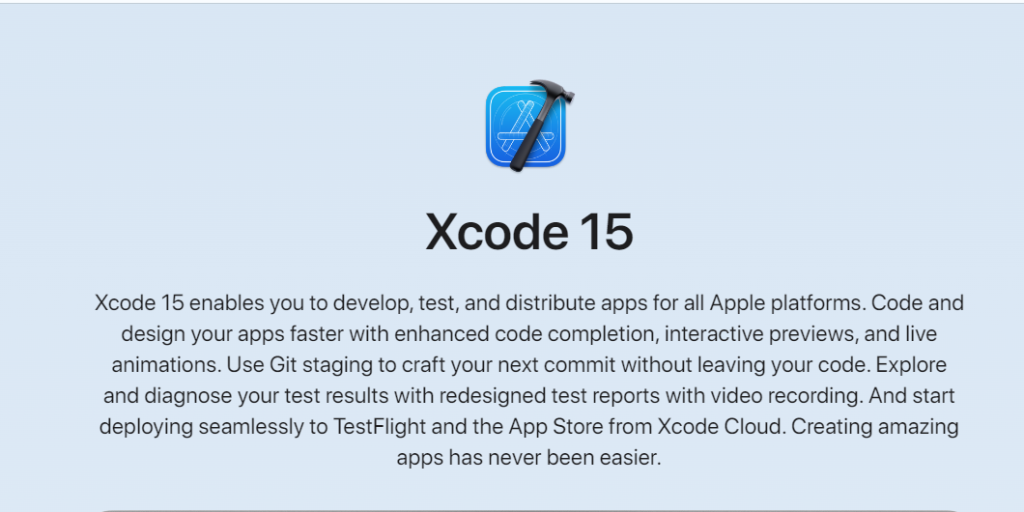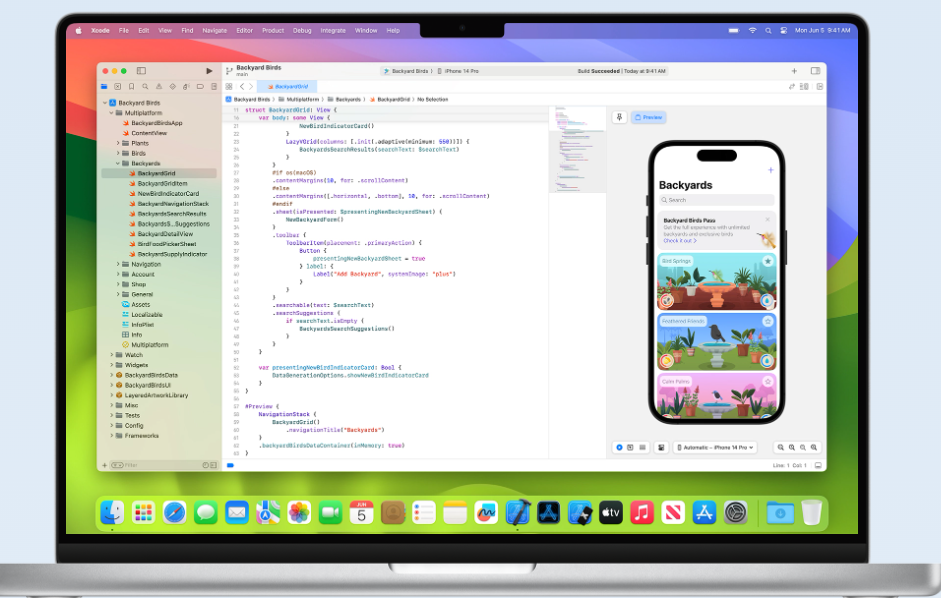A Quick Rundown Of Xcode

Xcode is Apple’s development framework used in all iOS operating systems. Like their entire ecosystem, Xcode as an integrated development environment is also strong and almost impossible to break through.
This article is a quick rundown of Xcode and aims to answer the following common questions our visitors and clients usually ask us during the discovery calls:
- Why and how do you use Xcode?
- Xcode vs Swift – what should developers choose?
- What are the features of Xcode and how do they support iOS development?
- What are the pros and cons of using Xcode?
What Is Xcode?
Xcode is an IDE (integrated development environment) created by Apple in 2003. The company dedicated Xcode for iOS development: building software programs and apps for iOS: iPhone, iPadOS, MacOS, WatchOS, tvOS and all other products under the Apple iOS system.

- C
- C++
- Objective-C
- Objective-C++
- Java
- AppleScript
- Python
- Ruby
- ResEdit (Rez)
- Swift
Xcode also supports third party programming languages like:
- GNU
- Pascal
- Free Pascal
- Ada
- C#
- Go
- erl, and D
How to Use Xcode On Windows And Linux?
Since Xcode is built by Apple themselves, it’s notoriously difficult to use it on operating systems like Windows. However, there are other cross-platform approaches to building iOS applications on third-party operating systems, including:
Visual Studio
React Native
Flutter
Xcode Vs Swift - A Detailed Comparision
Platform
Language
Developers can use Swift framework in the Xcode IDE. They can also write code in:
- C
- C++
- Objective-C
- Objective-C++
- Java
- Applescript
- Xcode Python
- React.js, and Ruby
Tools
The Xcode Python development platform features tools that enable developers in improving and rewriting their code. They can also test a single code base on several architectures, which saves time in the development process.
Application’s efficiency and UI see a boost because of Swift as a primary development language. The code used in Swift is scalable and easier to maintain. Along with having extensive memory management.
Compatibility
Functionality
Support
What Should Developers Choose Between Xcode And Swift?
While Swift is compatible with the Apple OS, Xcode on the other hand provides a quicker user interface and workflow. Similarly, Xcode is a well-designed but old system compared to Swift which means developers may have to do a lot of troubleshooting.
One last thing, you should note down is that two Apple applications work flawlessly together. Experts recommend using them in your iOS project planning. Now, the question comes up about whether to incorporate one or both of them in your iOS app development process. The simple answer to this is; it depends on your requirements.
The way to a successful iOS development process lies in integrating the right iOS technology and having a firm grasp on the internal workings of both Xcode and Swift.
Top 16 Features of Xcode
Integrated Development Environment (IDE)
Programming Languages
Simulator
Instruments
Create ML
Reality Composer
Build System
Swift Packages
User Interface Design
Debugging
- Inspect the running apps to isolate bugs.
- Locate crashes inside the system.
- Identify excessive system resource usage.
- Analyze memory bugs.
- Find layout problems.

Analyze Traffic With Instruments
Accessibility
Diagnosing Issues With Entitlements
Diagnosing Memory, Thread, And Crash Issues Early
Diagnosing Issues Using Crash Reports And Device Logs
Xcode Cloud
Ready to build your iOS application? Contact us today.
Get in touch with HOI Solutions today.
6 Benefits Of Xcode Development
Integrated Development Environment
Swift Programming Language
Interface Builder
Testing Tools
Continuous Integration and Deployment
Large Developer Community
4 Downsides of Xcode
Limited Platform Support
Steep Learning Curve
Large File Sizes
Big Projects Are Expensive
Why HOI’s Developers Love Xcode
Wrapping Up - Using Xcode for iOS Development
Xcode features a large toolkit for developers to help build applications for Apple’s operating system. With Xcode, developers create the complete development workflows starting from writing the code to testing the application.
Apple also updates the framework regularly making it faster, more efficient, and more stable for iOS development. That’s why Xcode is one of the best options for native development for Apple platforms.

